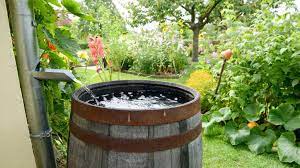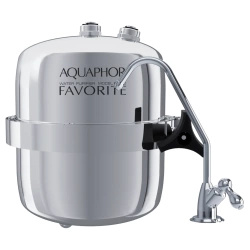Did you know that only less than 3% of the world’s water is freshwater? Due to the current scarcity of water being eco-friendly is not only a fashionable trend, but is becoming a necessity. On the other hand, this attitude does not have to lead to a radical change in our lifestyle. It is sufficient to make simple changes to our daily routines. Therefore, reducing our water consumption will not only save us valuable resources, but will also help us lower our monthly utility bills.
Here are our additional tips for reducing household water consumption.
Tip 6 – collect rainwater
 Collecting rainwater into tanks is a great way to save water. Firstly, it costs nothing. Secondly, you can collect a lot of water during a heavy rainfall. However, in order to enjoy this benefit, you need to equip your backyard water collecting system with rainwater filters. This is important as today’s rainwater has much more harmful acidic compounds than before. The filtered rainwater can be reused for household purposes such as washing, laundry, flushing toilets or watering plants in the garden on hot and dry days.
Collecting rainwater into tanks is a great way to save water. Firstly, it costs nothing. Secondly, you can collect a lot of water during a heavy rainfall. However, in order to enjoy this benefit, you need to equip your backyard water collecting system with rainwater filters. This is important as today’s rainwater has much more harmful acidic compounds than before. The filtered rainwater can be reused for household purposes such as washing, laundry, flushing toilets or watering plants in the garden on hot and dry days.
Tip 7 – reuse waste water from reverse osmosis
If you use a home reverse osmosis system for water purification, you know very well that during this process waste water is drained to a separate tank. Do not throw it away, because the waste water can be recycled. You can’t drink it, but you can use it to wash the floor, do the laundry, flush the toilet or water the flowers.
Tip 8 – repair / replace bathroom appliances
A leaky tap in the kitchen or bathroom can waste up to 15 liters of water a day. A similar amount of waste is caused by malfunctioning cisterns that let water run into the sewer system. Therefore, it is important to react quickly and repair any faulty equipment. Moreover, in case of frequent failures, it is worth replacing the fittings. In addition, the modern ones are usually more efficient and save water. As an example, let’s take single-lever faucets, which – in contrast to two-pipe taps – are easier to use. You can set the temperature and the stream at the same time and therefore use much less water. Similarly, the latest generation of flush toilets don’t allow for wasting water. Their two buttons dispense exactly the right amount of water to flush the toilet.
Tip 9 – prelator
This is an inconspicuous but very practical device for kitchen and bathroom faucets. It is a strainer or a tip for a tap which makes water flowing through it aerated. In this way, the stream of water seems larger to us. The reason is not to increase the quantity of water, but its volume. The prelator is a very cheap device available in every DIY store and its effectiveness will allow us to save a lot of money.
Water is one of the blessings of nature. Although today we have it in abundance and at our fingertips, it is a limited resource. We must take care of it, so it is not lacking for future generations. Saving water will contribute not only to our environment, but certainly also to our wallets.

